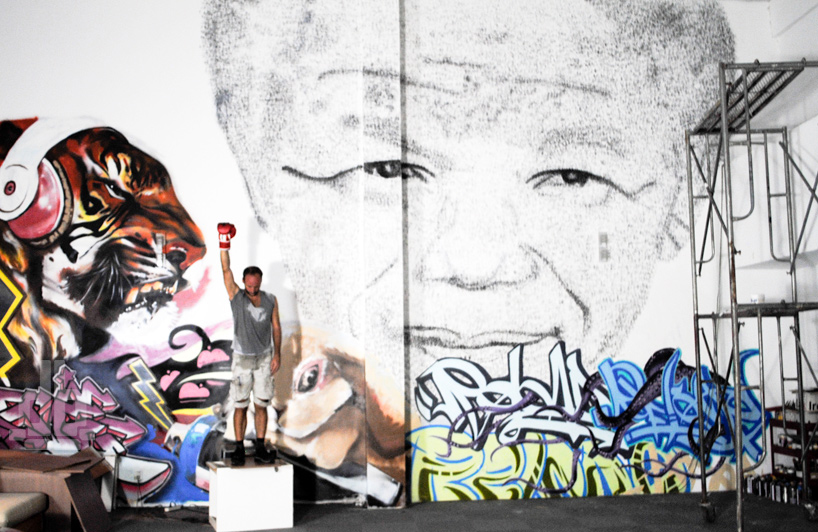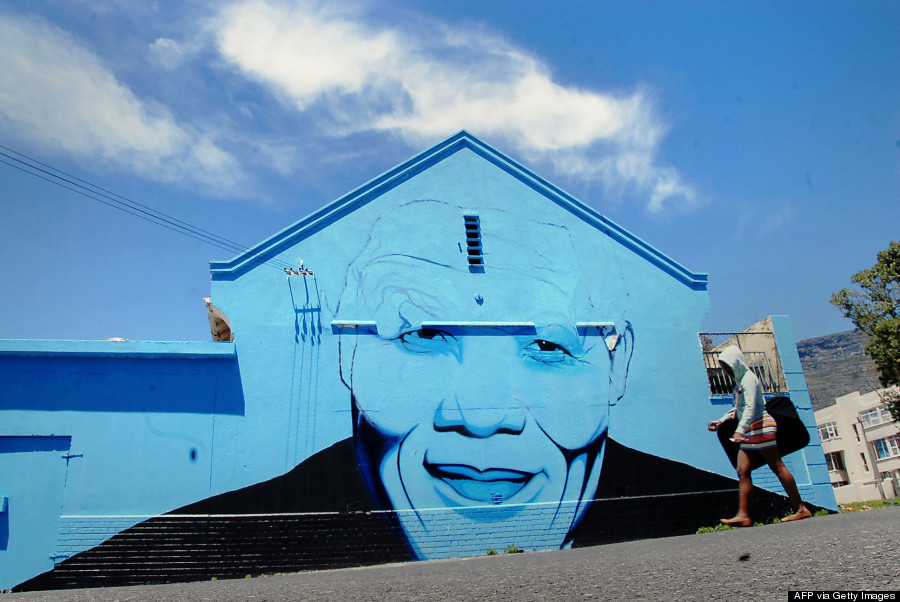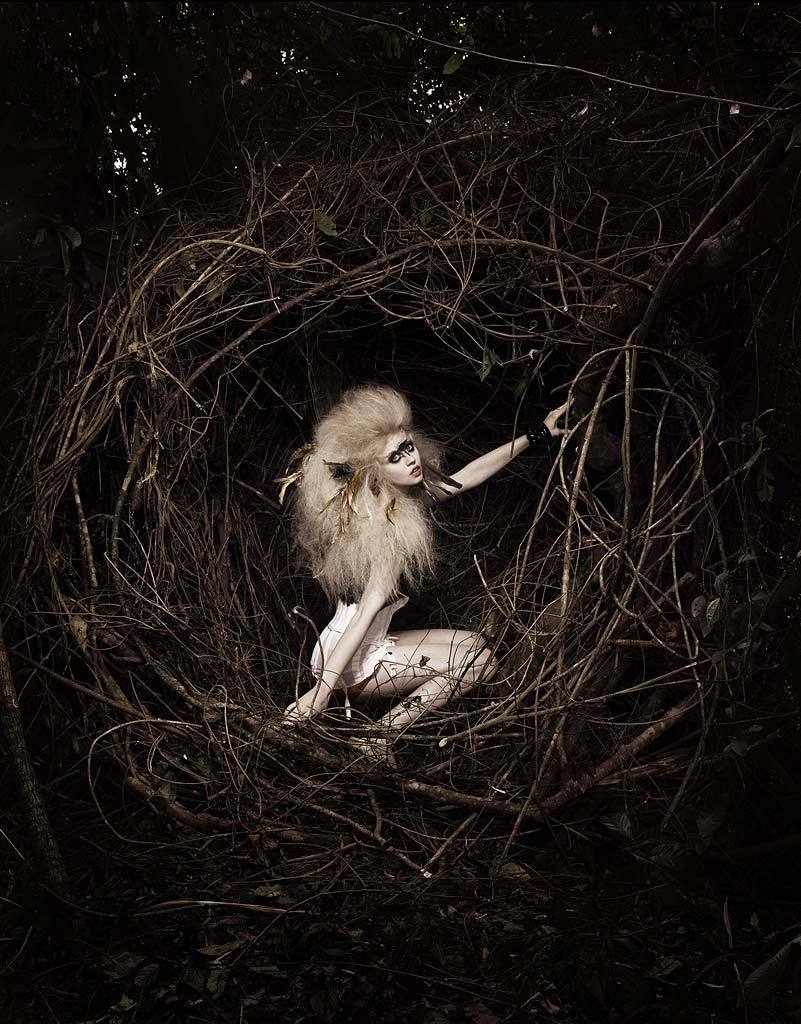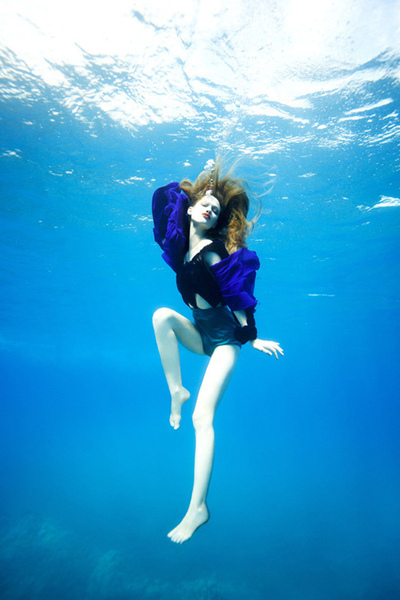Last night, the Museum of Contemporary Art in Detroit brought more than 90 artists to the exhibitions space to make art in a ‘part performance, part laboratory, part art bazaar’ called the Monster Drawing Rally. The live event and fundraiser started at 8pm and was divided into three hour-long shifts, each featuring 30 artists drawing simultaneously. As the drawings were completed, staff and volunteers picked them up, packaged them at a drying station, and hung them on the wall for exhibition and purchase at a uniform price of $40 each.
While the audience talked, mingled, and drank, the artists sat together at long tables set up in the open exhibitions room, practically bumping elbows as they developed their pieces. The sizes of paper provided by MOCAD were standardized, but the materials the artists brought varied widely– I noticed artists using pastels, charcoal, sharpie, micron pens, markers, stamps, collage materials, rubber cement, and the occasional ipod or laptop for reference. It felt oddly intimate to see the artists’ materials set out on their tables – the weathered pencil case, the folder of cut outs, the personal tub of rubber cement, so well known to the artists’ hands, minds and frustrations. Over the hour-long shifts, the audience watched the development of particular pieces. One artist used grids of tape to paint a perfectly geometric toilet plunger, another blew on globules of ink to create organic patterns, and another studiously sketched while glued to the eyepiece of his own personal microscope, which he was using to examine pieces of tape imprinted with what looked like tiny blue fingerprints.
The crowd favorite during the first shift was a blind contour artist named Hamilton, who was making sketches of people in the crowd. Blind contour is a method usually used to practice coordination between the eyes and the hands, so it requires the artist to keep his eyes off of the paper, forcing trust in the translation of visual perception to development on the page. Hamilton kept his subjects engaged, talking and laughing with them as his marker moved on the paper. The results were distorted, deliberately grotesque, but seeing the method added to my understanding – the lines were accurate, the placement deliberately wrong. During the second shift, the crowds gathered around Jonathan, who was making a piece out of chewed gum. “This is the clean bag,†he said, gesturing towards a plastic bag full of gumballs and chiclets. Audience members were encouraged to take a couple pieces, chew, and then spit into Jonathan’s gloved hands. A couple of children were at the front of the crowd, chewing athletically and looking a little bewildered. Jonathan held out his hand to receive a glob of chewed gum from a small girl, who looked slightly mistrustful of this manipulation of material, and he reassured her, “This is good. Look, it’s almost white. We need that color.†The air smelled sickly sweet in Jonathan’s vicinity; Ty, the pen and ink artist sitting next to him, looked less than thrilled.
Although a few artists engaged actively with their audience, most kept their eyes on the paper. One woman’s pen moved wildly as she glanced up and down from the faces of her audience to her paper, but she appeared to be drawing a minute, angled system of scaffolding.
Pieces changed quickly, and sometimes drastically, before our eyes. The black and white sketch of a man’s face – slightly mournful, classically handsome– was suddenly subtitled, in all capitals, ‘SAUSAGE FACTORY;’ a black and white sketch of an aggressively monstrous-looking bird was transformed as it was colored in with pastel markers, and titled in sloppy pen, ‘Compassion + Love are the seeds of hope!’ Many artist seemed to have a calculated plan for their hour – Tavi Veraldi, an artist and friend of my sister’s, confided in me that she was planning to draw an old man. “I’m super good at drawing old men,†she said, adding that she was hoping to dupe the crowd into thinking she was that good at drawing everything. It was a self-deprecating joke – Tavi is that good at drawing everything – but most artists did seem to be using the techniques or concepts that they were most comfortable with to create something coherent within the time constraint.
Even so, I enjoyed watching them at work. Observing a man labor on his sharpie drawing of an owl, I appreciated how his bold lines began as tentative marks – permanent and dark, but easily erased by incorporation. The bold line is presumptive, scary, and enduring, much like the piece of artwork declared, after an hour, ‘finished.’











